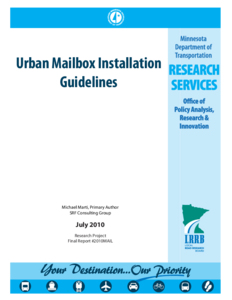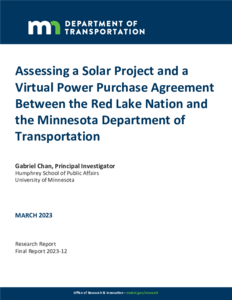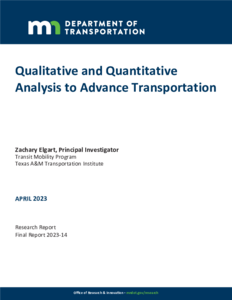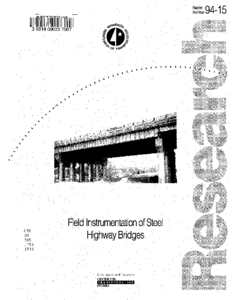Displaying results 21 - 30 of 1780
Urban Mailbox Installation Guidelines
Creator
Date Created
2010-07
Report Number
2010mail
Description
Is Your Mailbox a Hazard?
Date Created
2010-10
Report Number
2010-MailB
Description
Assessing a Solar Project and a Virtual Power Purchase Agreement Between the Red Lake Nation and the Minnesota Department of Transportation
Date Created
2023-03
Report Number
2023-12
Description
System Preservation Guide: A Planning Process for Local Government Management of Transportation Networks (Presentation)
Date Created
2016
Report Number
2016-34PP
Description
Qualitative and Quantitative Analysis to Advance Transportation
Creator
Date Created
2023-03
Report Number
2023-14
Description
Understanding post-COVID safety concerns toward the use of transit and shared mobility in Greater Minnesota
Date Created
2023-04
Report Number
2023-16
Description
Field Instrumentation of Steel Highway Bridges
Date Created
1993-02
Report Number
94-15
Description









